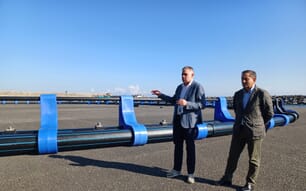The Pacific bluefin tuna is in a dire state. Its population is at just four per cent of unfished levels, yet overfishing continues, said Elizabeth Wilson, International Ocean Policy Director, The Pew Charitable Trusts.
In a 2014 stock assessment, the International Scientific Committee for Tuna and Tuna-like Species in the North Pacific Ocean (ISC) analyzed seven management scenarios for the fish. Only one predicted population growth. However, last year, catch limits in the eastern Pacific were set 20 per cent higher than those recommended by the ISC, and that means the species remains in jeopardy.
This year, IATTC members must step up for Pacific bluefin tuna and follow the science. The best way to help rebuild the population is to cut the eastern catch from 3,300 to 2,750 metric tons a year—a limit that should include dead discards and recreational catch, which aren't included in current limits, said Ms Wilson.
If countries don’t demonstrate such a commitment to the recovery of Pacific bluefin at this meeting, international trade regulation may be needed.
Pablo Guerrero, WWF’s Eastern Pacific Ocean Tuna coordinator, added: “Tuna management in the Pacific is currently totally inadequate to preserve the Pacific Bluefin tuna stock. Only a significant reduction of catches and stringent measures to protect juveniles can ensure long-term sustainability of this fishery."
"We urge the IATTC to freeze the current capacity of the fishing fleet and work toward reducing the number of vessels authorized to fish for tuna in the eastern Pacific Ocean. This will also be in the best interest of the industry because it will address the problem of securing the future of tuna fisheries in the region,” said Mr Guerrero.
Increasing Port Control
One of the most cost-effective ways to combat illegal, unreported, and unregulated fishing is to increase what are known as port controls. While many countries are working to build their national port inspection programs, the IATTC has not adopted its own guidance.
Strengthening and harmonising controls on fishing vessels involved in the landing and transshipment of fish helps to keep illegal catch out of the global supply chain.
For these inspections to be most effective, all of the region’s ports need to get on board. Since some countries may not have the capacity to effectively implement measures at port, other member States should help provide financial and technical assistance.
There’s no doubt that effective management of millions of square kilometers of ocean is difficult. But it is doable.
This year, once again, IATTC members have an opportunity to protect the region’s marine ecosystems by improving the conservation of top predators and ensuring compliance when vessels tie up in any of the region’s ports.
By taking science-based, conservation-minded action and improving port inspections, IATTC members can show the world that they value the health, and the future, of the Pacific Ocean.




